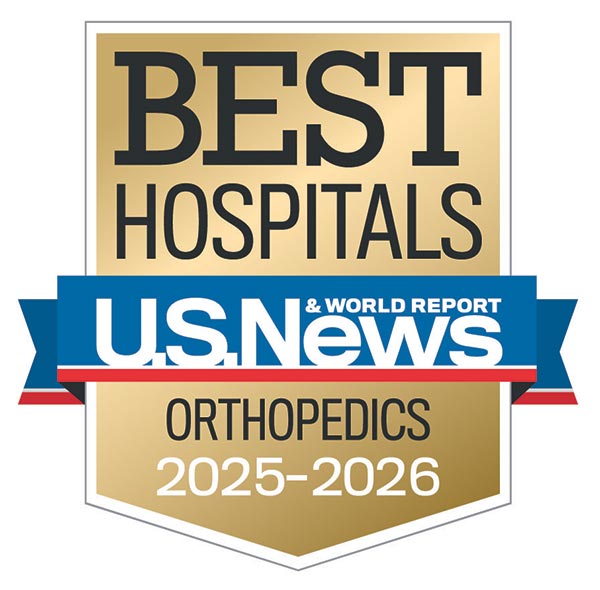Proof of Concept: Experimental Metatarsal osteotomy Leads to Greater Reduction in Plantar Pressure Versus Weil Osteotomy and its Modifications
For treating various conditions that result in metatarsalgia, the basic aim is to reduce load transmission through the operated metatarsal and reduce pressure on the plantar surface of the metatarsal. The classic Weil osteotomy, recommended for the subluxed or dislocated metatarsal phalangeal joint (MTPJ), is effective for reducing pain.
According to Umur Aydogan, MD, Penn State Bone and Joint Institute, “Although Weil osteotomy can be effective, some patients experience complications, like recurrent or transfer metatarsalgia, ‘floating toe,’ avascular necrosis, and stiffness. Some complications may occur because this is an intra-articular procedure.”
Aydogan, along with biomechanical engineering colleagues at Penn State Health Milton S. Hershey Medical Center, has explored an alternative extra-articular procedure to reduce the high plantar pressure associated with metatarsalgia. In a cadaveric model, they compared the effects on plantar pressure following classic and modified Weil osteotomies versus their extra-articular, proximal metatarsal diaphyseal oblique dorsiflexion second metatarsal osteotomy. The findings will be presented at the upcoming annual meeting of the American Orthopedic Foot and Ankle Society (AOFAS).1
For this new technique, a triangular wedge of bone was removed from the proximal diaphyseal one-third of the second metatarsal and the osteotomy was then closed, resulting in dorsiflexion. All osteotomies were fixed using one 2.4 millimeter cannulated screw. Before and after the procedures, biomechanical load equivalent to 90 pounds was applied to the exposed proximal tibia and plantar pressure under the second metatarsal head was measured using an Emed pressure-sensing mat. “With our extra-articular technique, average plantar pressure under the second metatarsal head was reduced by 19 kilopascals, which was highly statistically significant [0.004]. Neither the classic nor the modified Weil osteotomies significantly reduced plantar pressure; we actually saw small pressure increases,” reported Aydogan.
The effects of pairing the new extra-articular osteotomy with an Achilles tendon lengthening procedure, versus plantar fascia release were also evaluated. “Using the same model we found that plantar fascia release actually increased metatarsal pressures,” said Aydogan. Others have similarly reported no significant reduction in plantar pressure following Weil osteotomy.2,3 Aydogan notes, “Our results and other similar findings suggest that the benefits from Weil osteotomy must be related to some other mechanism and not reduction in plantar pressure.”
The extra-articular osteotomy technique will now be evaluated clinically. “We plan to perform this new procedure in our patients and will measure plantar pressures both before and after surgery, to build on our experimental model data. In addition to evaluating clinical benefits with the new technique, we‘re also very interested in looking at post-operative complications. I suspect that because it’s an extra-articular procedure, compared to Weil osteotomy, there may be lower risks for problems like loss of range of motion and avascular necrosis,” said Aydogan.

Umar Aydogan, MD
Associate Professor, Orthopaedics and Rehabilitation
Orthopaedic Surgeon, Foot and Ankle Specialist
Phone: 717-531-4801
Email: uaydogan@pennstatehealth.psu.edu
Fellowship: Surgery, foot, Duke University School of Medicine, Durham, N.C.
Residency: Orthopaedic surgery, Ege University Faculty of Medicine, Izmir, Turkey
Medical School: Hacettepe University, Ankara, Turkey
Connect with Penn State Bone and Joint Institute on Doximity
References
- Aydogan U, Andrews S, Moore B, Lewis G. Biomechanical comparison of various 2nd metatarsal osteotomies on peak forefoot pressures, to be presented at the 45th annual meeting of the American Orthopedic Foot and Ankle Society, September 21-23, 2014, Chicago, Illinois.
- Snyder J, Owen J, Wayne J, Adelaar R. Plantar pressure and load in cadaver feet after a Weil or chevron osteotomy. Foot Ankle Int. 2005 Feb;26(2):158-65.
- Lau JT, Stamatis ED, Parks BG, Schon LC. Modifications of the Weil osteotomy have no effect on plantar pressure. Clin Orthop Relat Res. 2004 Apr;(421):194-8.

